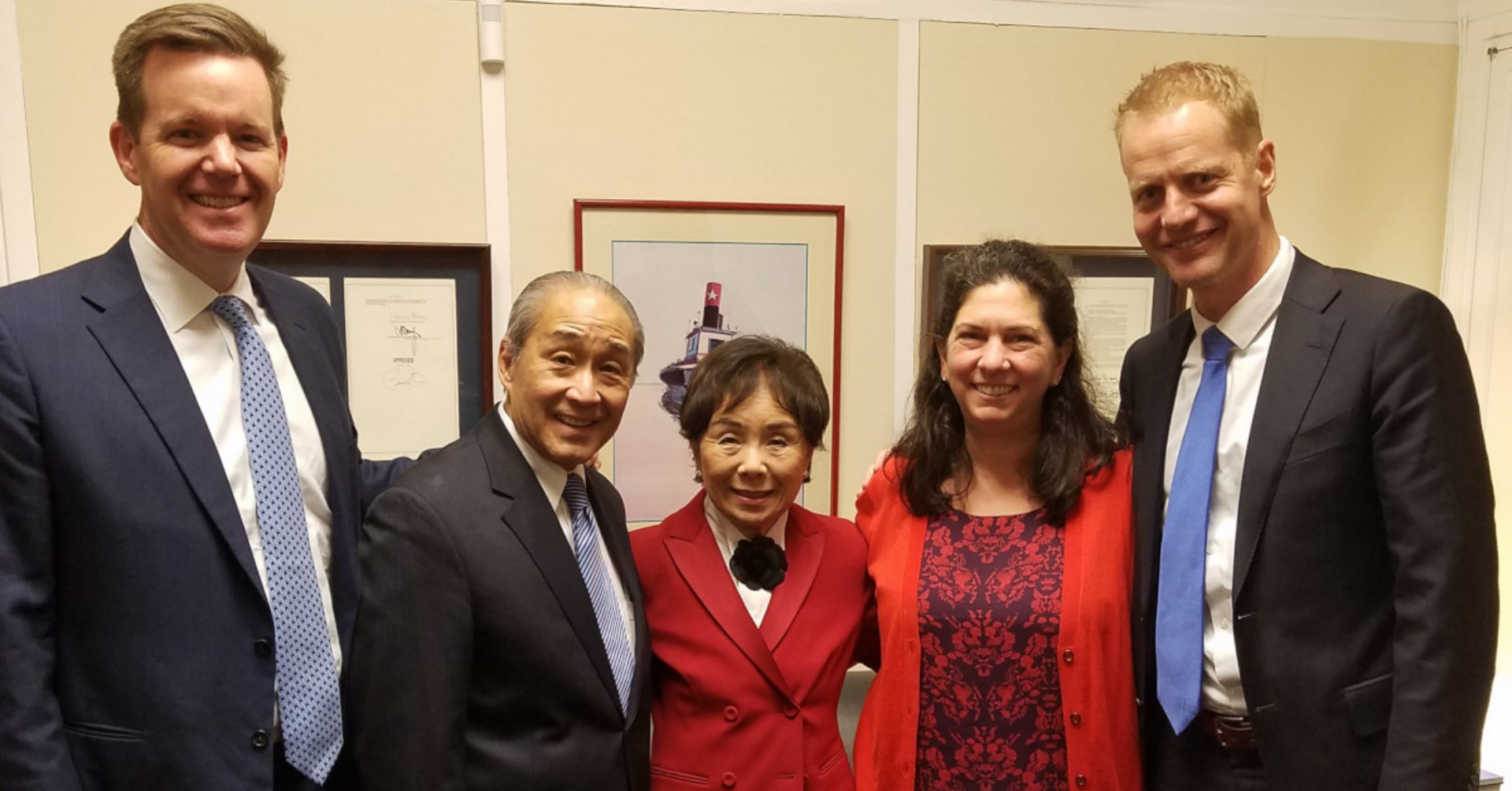In 2006-2007, The AA&MDS International Foundation embarked on a strategic awareness and advocacy initiative to secure funding from the Defense Appropriations Act for Congressionally Directed Medical Research Program in a (CDMRP). It was through AAMDSIF’s advocacy that a connection between acquired bone marrow failure and environmental links to bone marrow failure with American veterans, military retirees and civilians was made clear. This was one more way the Foundation has led efforts to find move the needle forward in the search for cures for bone marrow failure diseases.
2023 Update
The Bone Marrow Failure Research Program through the Defense Department's Congressionally Directed Medical Research Program (CDMRP) will be funded at $7.5 million in 2023 - this is an increase of $4.5 million over FY2020.
In partnership with Congresswoman Doris Matsui (CA), the Aplastic Anemia and MDS International Foundation has been the lead patient organization advocating for this federal funding for over 13 years. Congresswoman Doris Matsui (CA) was the lead sponsor of the appropriations request for continuing funding of the Bone Marrow Failure Research Program in March 2020, and in July she submitted an amendment to the House version of the bill that increased the funding by $4.5 million.
"As a patient-survivor, I know that the BMFRP's goal of funding research that promotes new treatments and cures for bone marrow failure diseases is incredibly important. The clinicians, researchers, and consumer reviewers who participate it will ultimately help. Bone marrow failure diseases are rare and, as such, suffer from a lack of pharmacological industry interest due to the small patient population. This lack of industry interest makes the BMFRP all the more important. The program offers a consistent mechanism for funding new and experienced investigators who wish to further their work in the area of bone marrow failure research. This funding increase will enable the BMFRP to fund more research projects in the FY21 funding cycle, and hopefully move us more rapidly (understanding that in the world of research, "rapid" is a relative term) toward the goal of finding new treatments, and ultimately cures, for bone marrow failure diseases. I'm forever grateful to Congresswoman Matsui for her efforts on behalf of all patients with rare bone marrow failure diseases."
- Debby Cook, an aplastic anemia survivor and member of the AAMDSIF Board of Directors and a consumer review for the Bone Marrow Failure Research Program for the pats 6 years https://cdmrp.health.mil/cwg/stories/2017/deborah_cook_profile
In 2006-2007, The AA&MDS International Foundation embarked on a strategic awareness and advocacy initiative to secure support from the Defense Appropriations Act for Congressionally Directed Medical Research Program (CDMRP). It was through AAMDSIF’s advocacy that a connection between acquired bone marrow failure and environmental links to bone marrow failure with American veterans, military retirees and civilians was made clear. This was one more way the Foundation has led efforts to advance the search for cures for bone marrow failure diseases.
It was not until Fiscal Year 2008 (FY08) that the Department of Defense allocated funding for Bone Marrow Failure research, a new category of funding for acquired and hereditary bone marrow failure. AAMDSIF has been very grateful to Congresswoman Doris Matsui, (CA), for her leadership and strong advocacy on Capitol Hill as the voice for all bone marrow failure patients.
Congresswoman Matsui’s husband, the Honorable Robert T. Matsui (CA), a 13-term member of Congress, passed away on January 1, 2005 from MDS.
A Decade of Progress with CDMRP for Bone Marrow Failure Research
There are over 7,000 rare diseases, and just 5% of them have some form of therapy. Today, our community of patients and families know that a diagnosis of aplastic anemia, MDS or PNH can be viewed with hope of long-term survival. There are therapies today for all three primary disease areas. The newest therapies for MDS and PNH only arriving in the last decade.
Impact of CDMRP
From FY08 through FY21, $49.05 million was appropriated by Congress to research the prevention, causes, and treatment of BMF diseases. The appropriation for FY22 for the BMFRP was $7.5 million. Thus far, the BMFRP has funded 92 awards, with the mission to support innovative research committed to advancing the understanding of inherited and acquired BMF diseases in order to develop new treatments and ultimately, cures.

From FY08-FY17, BMFRP awardees have produced over 100 publications in highly respected scientific journals. In addition to publications, the BMFRP awards have produced one patent (Ebert B. 2016. Methods for determining response to a hypomethylating agent, International Patent No. WO 2014/183122 A.1) and one patent application (Zhang Y. 2016. DLL4-expressing cells and vaccine using the same).
BMFRP publications make a significant impact on the research field. As shown in the figure below, the BMFRP has the highest average number of citations from supported research publications. Its average number of citations per publication is larger than those of the National Institutes of Health (NIH), the American Society of Hematology, and the Edward P. Evans Foundation.

Figure 2: Publications and Citations from Bone Marrow Failure Research Grants / Awards (2011 - 2017)


